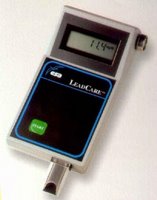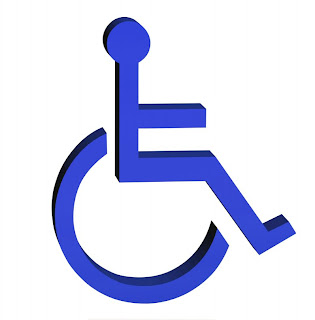Lead Exposure and Children
Lead exposure is a serious problem for children under 6. Large amounts of lead in a child's blood can cause brain damage, mental retardation, behavior problems, anemia, liver and kidney damage, hearing loss, hyperactivity, developmental delays, other physical and mental problems, and in extreme cases, death.
There are many ways in which humans are exposed to lead: through deteriorating paint, household dust, bare soil, air, drinking water, food, ceramics, home remedies, hair dyes and other cosmetics. Much of this lead is of microscopic size, invisible to the naked eye. More often than not, children with elevated blood lead levels are exposed to lead in their own home.
Until 1978, lead paint was commonly used on the interiors and exteriors of our homes. Today, the US Department of Housing and Urban Development (HUD) estimates that about 38 million homes in the US still contain some lead paint. While lead paint that is in intact condition does not pose an immediate concern, lead paint that is allowed to deteriorate creates a lead-based paint hazard. It can contaminate household dust as well as bare soil around the house, where children may play. In either situation, a child who comes into contact with lead-contaminated dust or soil is easily poisoned. All it takes is hand-to-mouth activity, which is perfectly normal for young children to engage in. All it takes is the lead dust equivalent of a single grain of salt for a child to register an elevated blood lead level.
Even with a considerable reduction in the number of children suffering from lead poisoning over the past 30 years, lead poisoning remains the number one environmental threat to children, according to the CDC, yet it is entirely preventable. The key is early detection through screening and immediate intervention when testing identifies elevated blood-lead levels.
 Good news for parents, the U.S. Food and Drug Administration has approved a new blood test that measures lead exposure and vies results in only three minutes. With only two drops of blood in just three minutes, providers no longer have to wait days for expensive lab results, or spend time trying to contact patients for critical follow-up care. It requires only a finger-stick sample and can be combined with other routine waived blood tests.
The test will identify how many micrograms of lead are found in one deciliter of the child's blood. Based on what is known today, children should have under 10 micrograms per deciliter (10 ug/dL) of blood lead concentration. If higher levels are found, there are certain steps that can be taken.
Good news for parents, the U.S. Food and Drug Administration has approved a new blood test that measures lead exposure and vies results in only three minutes. With only two drops of blood in just three minutes, providers no longer have to wait days for expensive lab results, or spend time trying to contact patients for critical follow-up care. It requires only a finger-stick sample and can be combined with other routine waived blood tests.
The test will identify how many micrograms of lead are found in one deciliter of the child's blood. Based on what is known today, children should have under 10 micrograms per deciliter (10 ug/dL) of blood lead concentration. If higher levels are found, there are certain steps that can be taken.
At 10-19, a child has mild lead poisoning. He or she should be retested in a few months. The home and all the places the child spends time should be checked for lead sources. Identified lead hazards should be controlled. Frequent wet cleaning and handwashing will help reduce lead dust. Good nutrition can help the child fight lead.
A blood lead level between 20-44 means the child has moderate lead poisoning. Sources of lead in the child's environment must be removed. Such a child may need chelation therapy to remove lead from the body. Chelation therapy means the child is given a drug capable of binding lead and reducing its acute toxicity. All drugs have potential side effects and must be used with caution.
A blood lead concentration of 45-69 is severe lead poisoning. A child needs both medical treatment and lead removed from the environment.
If the child's blood lead level tests over 70, it is an acute medical emergency. The child may stay in the hospital for treatment and not be released until he or she can return to a lead-free safe home.
Some tip to prevent lead exposure:- Keep children away from peeling or chipping paint and accessible or chewable surfaces painted with lead-based paint, especially windows, window sills, and window wells.
- Wet mop and wet wipe hard surfaces, using trisodium phosphate detergent (found at hardware stores) or automatic dishwasher soap and water.
- Do not vacuum hard surfaces because this activity is believed to scatter dust.
- Wash children's hands and faces before they eat.
- Wash toys and pacifiers frequently
- Do not store food in open cans, especially imported cans. Do not store or serve food in pottery that is meant for decorative use. Also, do not store food or beverages in lead crystal or china.
- If soil around the home is likely to be lead-contaminated (such as around a home built before 1960 or near a major highway), plant grass or other ground cover. If lead-based paint is the source of soil contamination, most lead will be near painted surfaces such as exterior walls. In such cases, plant bushes next to the house to keep children away. If the soil is contaminated with lead, provide a sandbox with a solid bottom and top cover, and clean sand for children to play and dig in.
SOURCE:ecanadanow.com SOURCE:thearc.org SOURCE:nsc.org

Comments